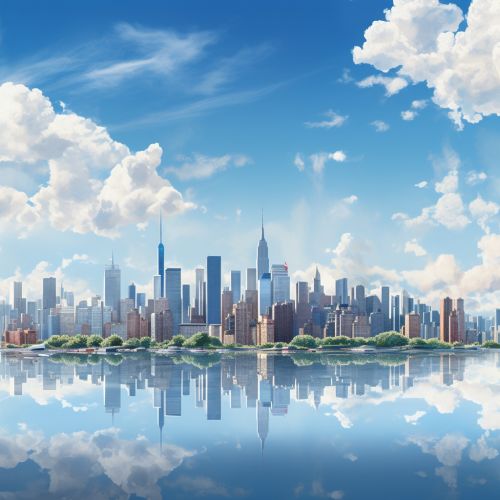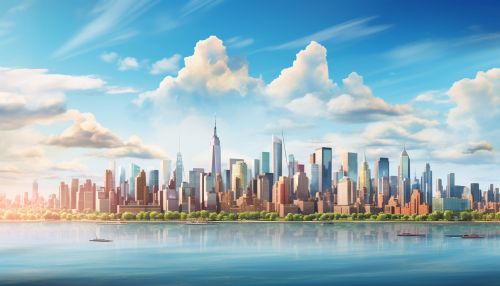Manhattan
Geography
Manhattan, one of the five boroughs of New York City, is located primarily on Manhattan Island. It is bounded by the Hudson River to the west, the Harlem River to the north, and the East River to the east. The borough extends through the middle of New York Harbor, north to the Bronx, and west to New Jersey.


History
Manhattan's history dates back to the early 17th century when it was inhabited by the Lenape Native Americans. The Dutch established the colony of New Amsterdam on the southern tip of the island in 1624, which was later renamed New York when the English took control in 1664. The city grew rapidly in the 19th and 20th centuries as a result of immigration, the construction of the Erie Canal, and the advent of the railroad.
Demographics
As of the 2020 census, Manhattan's population was approximately 1.7 million. The borough is known for its diverse population, with residents representing a multitude of ethnicities, cultures, and socioeconomic backgrounds. The largest ethnic groups include Whites, African Americans, Hispanics, and Asians.
Economy
Manhattan is a major center for finance, with many of the world's largest corporations, banks, and financial institutions headquartered in the borough. The Wall Street financial district is home to the New York Stock Exchange and the NASDAQ, two of the world's largest stock exchanges.
The borough also has a strong presence in the media, advertising, legal services, technology, and real estate industries. The Silicon Alley, located in the Flatiron District, is a hub for high tech startup companies.
Culture
Manhattan is renowned for its contribution to culture, including visual arts, music, theater, dance, and literature. The borough is home to many world-class museums, art galleries, theaters, and concert halls, including the Metropolitan Museum of Art, the Museum of Modern Art, the Lincoln Center for the Performing Arts, and the Broadway theater district.
Architecture
Manhattan's skyline is characterized by a large number of skyscrapers and high-rise buildings. The borough is home to some of the world's tallest buildings, including the One World Trade Center, the Empire State Building, and the Chrysler Building. Architectural styles range from the historic brownstones of the Upper West Side to the modernist designs of Midtown.
Transportation
Manhattan has a comprehensive public transportation system, operated by the Metropolitan Transportation Authority. The New York City Subway system serves the borough with numerous lines and stations. Manhattan is also served by several commuter rail lines, bus routes, and ferry services.
Education
Manhattan is home to numerous institutions of higher education, including Columbia University, New York University, and the City University of New York. The borough also has a wide range of public and private primary and secondary schools.
